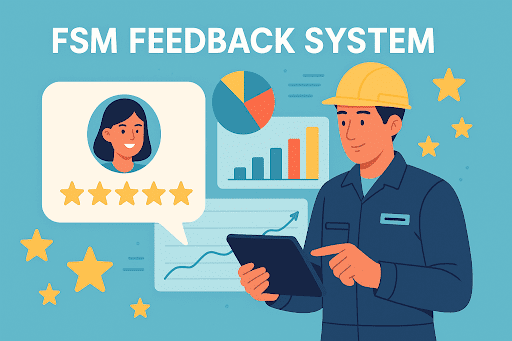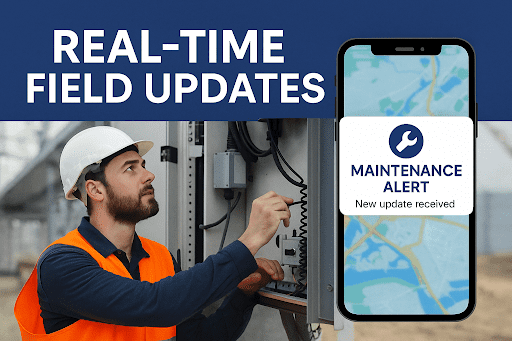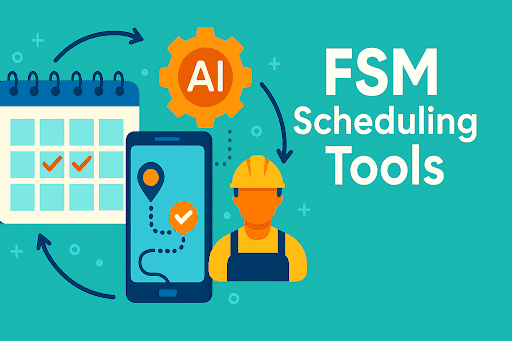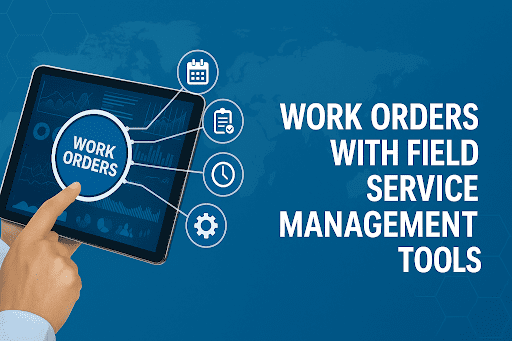 BACK TO Blog
BACK TO Blog
Asset Rental Management
Field Service
Executive Insight – When the Truck Rolls Without the Part It starts off routine. A service call gets logged, a technician is dispatched, and the customer waits. But the job stalls before it begins because the right part is not in the van. At that point, everything else falls apart.
- June 20, 2025
- DreamzCMMS Team
- 9 minutes read
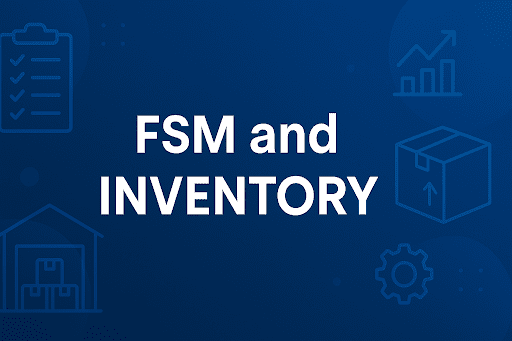
- June 20, 2025
- DreamzCMMS Team
- 9 minutes read
Executive Insight – When the Truck Rolls Without the Part
It starts off routine. A service call gets logged, a technician is dispatched, and the customer waits. But the job stalls before it begins because the right part is not in the van.
At that point, everything else falls apart. First-time resolution? Gone. Technician efficiency? Take a hit. Client trust? Slips.
That is not a training issue. It is an inventory one.
For decision-makers, this is not new. What is changing is how fast it adds up. You are not just losing minutes, you are losing margins.
Linking FSM and Inventory is not about fancy dashboards. It is about making sure the parts are where they need to be. It is about better inventory visibility for field technicians, so the person on-site knows they are equipped before stepping out of the vehicle.
The right system does not just track. It connects the dots between stock levels, field activity, and service demand. A good RFID asset tracking software helps the back office and field crews stay in sync, especially in high-volume service operations.
This is where field service inventory management becomes more than just logistics. It is the difference between finishing a job and rolling that truck again tomorrow for the same problem.
We will get into how companies are using mobile inventory for field teams to tighten that loop next.
Operational Reality – Making Inventory Work in the Field
Here is what usually goes wrong. A tech gets the job, hops in the van, drives out and then realizes the needed part is not with them.
That one gap throws everything off. Time is lost. A second trip gets booked. The customer is not pleased. Multiply this across teams, and it becomes a daily headache.
What fixes it? Clarity. Not in the office. In the field.
When field teams have real-time inventory for FSM, they know what they are carrying. They also know what is missing before they leave the site. It sounds basic, but that change makes a big difference.
The smart ones are switching to mobile inventory for field teams. No more guessing. No more calling in. The tech opens a mobile app, checks their parts, and moves with confidence. It is faster, and it feels better for them and the customer.
Field parts and stock management is no longer about what is in the warehouse. It is about movement. What came in this morning? What got used two hours ago? Who needs what next? That live visibility matters.
And it is not just about speed. It also brings accuracy. Stock levels stay updated. Teams stop duplicating tasks. Mistakes drop.
If your teams are still relying on phone calls or spreadsheets, they are playing catch-up. Bringing in a FSM inventory tracking system bridges that gap.
For companies using asset maintenance management software, the link becomes even tighter. Parts are tied to assets. Usage patterns are visible. You plan better, waste less.
This is not a theory. It is what field-ready teams are doing right now to stay ahead.
In the next section, we look at how field service scheduling software pairs with inventory insights to make dispatch more precise and less reactive.
Dispatch Without Blind Spots – Scheduling Meets Inventory
Let us talk dispatch. You can have the best scheduler in the business, but if the job is assigned without checking inventory first, there is still a risk. The part might not be there. The fix might not happen.
That is where things start to unravel. Now imagine a different setup. Before a job gets assigned, the system cross-checks the technician’s available parts. If what is needed is not in the van, the job does not get booked simply as that.
This is what field service scheduling software can do when it works hand in hand with inventory visibility for field technicians. It does not just fill the calendar. It plans for success. The tools do not have to be complicated either. With the right field service software, dispatchers can view stock levels in real time. They can match jobs to techs based on what is on hand.
It makes the process smoother. Fewer delays. Better use of labor. Less shuffling of appointments.
For service leaders, this unlocks something bigger predictability. If a part is consistently out of stock, the system flags it. You start to see patterns, not just problems. That is where good field service inventory management ties into forecasting. You stop reacting and start planning.
And when systems talk to each other scheduling, inventory, service records you also unlock stronger asset performance. That is where DreamzCMMS begins to fit into the picture, helping prevent failures before they happen.
One change leads to another. You go from missed fixes to tight operations. From scrambling to scheduling with confidence. In the next section, we will shift focus to the metrics how integrating FSM and Inventory directly impacts performance KPIs like first-time fix rates and job completion times.
Quick Check-In: Is Your Field Team Still Guessing?If your technicians are calling in for parts, checking outdated stock sheets, or showing up half-prepared, it is time for a change. With the right field service management tools, your teams gain real-time visibility, smarter work orders, and less friction in the field. Curious how it fits into your current setup? Take a few minutes to see what a connected system can do for response times, team efficiency. Schedule a demo today. |
Performance Wins – The Metrics That Matter
Let us skip the fluff. If the numbers do not move, the strategy is not working. Executives do not have time for guesswork. They want proof on paper, in dashboards, in the monthly review.
So, what changes when FSM and Inventory systems are connected? The most obvious? First-time fix rates.
It climbs. Fast. When the tech has the part, the job is done the first time. That means fewer callbacks, happier clients, and better resource use. But that is not all. You also see an improvement in job completion time. There is no back-and-forth, no unnecessary delays. Just a straight path from arrival to solution. Inventory control in field service shows up in cost savings too. Less fuel, fewer trips, tighter schedules.
And let us not forget the field teams. With the right tools, especially mobile inventory for field teams, they waste less time tracking parts. They get more done in fewer steps. That boosts morale. Reduces burnout. You keep your best people longer.
When you pull reports from your field service management software, these wins are easy to spot. Fewer reschedules. Tighter SLAs. Shorter downtime.
And if you are running preventive maintenance software, that benefit stretches even further. It reduces surprise failures. You plan ahead. Inventory aligns with known service needs.
At the top level, these gains drive real impact. More contracts. Better margins. Stronger retention. In our final section, we will look at what it takes to put this in motion: the strategy behind making FSM and inventory work together without breaking your flow.
Implementation – Step-by-Step, the Human Way
Rolling out FSM and Inventory tools requires more than flipping a switch. Here is how companies that succeed actually do it:
1. Start Small
Do not launch across every region. Begin with one team, in one location. Let them test. Let them give honest feedback. Adjust early, scale later.
2. Train in the Field
Skip the classroom slides. Walk your techs through real situations using mobile inventory for field teams. Revisit training as habits form.
3. Connect Scheduling to Inventory
Make sure your field service scheduling software talks to your stock system. It should know what is available before assigning the job. That link saves time and face.
4. Clean Your Data
No more old spreadsheets. Standardize your inventory entries. Drop duplicates. Organize your field parts and stock management into something that can scale.
5. Involve More Than IT
This is not just a tech rollout. Field ops, finance, warehouse, and service heads need to know what is changing and why. Clarity reduces resistance.
6. Track What Matters
Watch your first-time fix rate. Track delays. Review inventory mismatch rates. Let results not opinions drive the next steps.
7. Consider Future Layers
Some companies tie this into predictive maintenance software or a full asset management system later. Start lean. Expand only when ready.
8. Keep It Simple
A great system should feel light. If your people say it is clunky, listen. Remove friction. The best tools get used without second thought.
Conclusion – One Fix, One Visit, One Competitive Edge
At the end of the day, service businesses win or lose in the field.
When your teams are equipped with the right parts, the right tools, and the right data they fix things fast. They fix them right. And they rarely need to come back.
That is what a strong FSM and Inventory setup delivers. It is not about software. It is about making the service experience smoother for your people and your customers.
You do not need a massive overhaul to get started. What you need is clarity. A plan. And a system that does not get in the way. If your operations are ready to move faster, deliver better, and reduce the noise this is the step that moves the needle.
Additional Reads – Explore What Comes NextLooking to build on what you have learned about FSM and inventory integration? These reads offer more depth on improving field operations and service outcomes:
|
Ready to Fix It Right the First Time?You have the teams. You have the demand. Now give your operation the tools to deliver faster, cleaner, and with fewer return visits. DreamzCMMS is built to connect the dots between people, parts, and performance. From inventory visibility for field technicians to smart dispatch and full asset oversight, the platform grows with your needs without slowing you down. Request a Personalized Demo. |
Ready for More?
Talk to one of our CMMS experts and see how DreamzCMMS can simplify your maintenance operations.
Book a free consultation